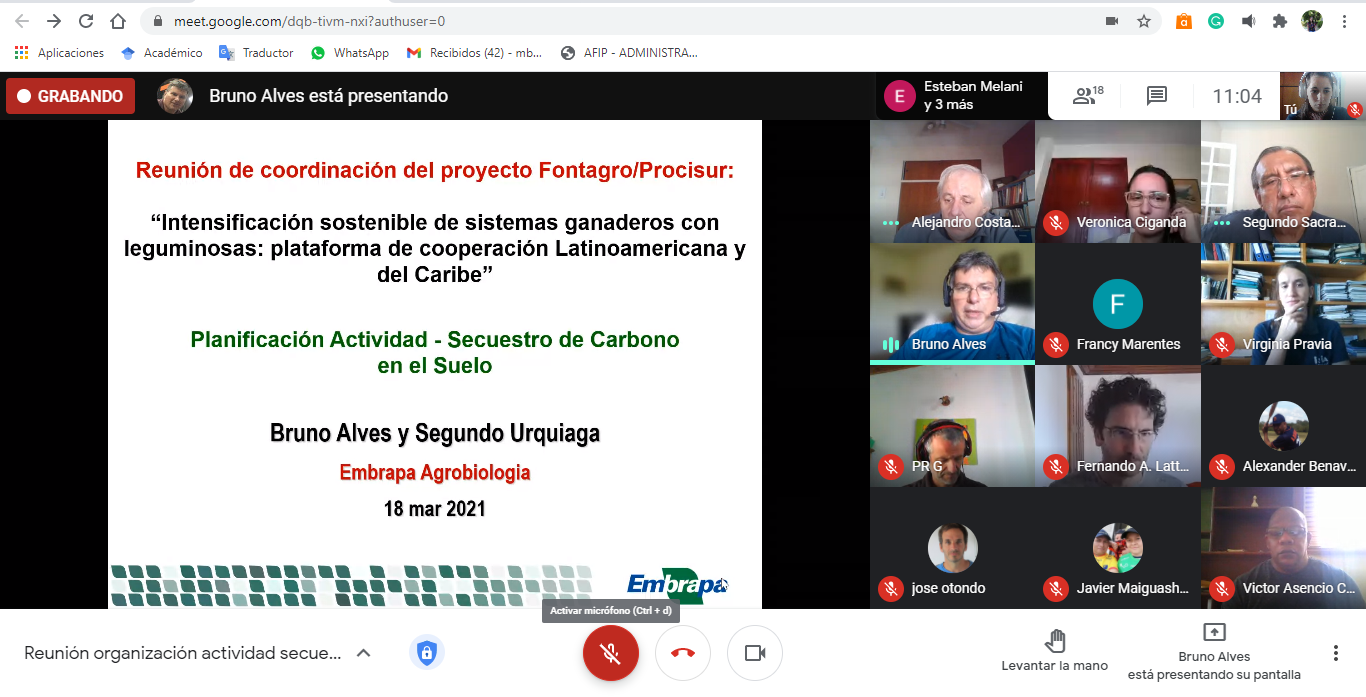
One of the specific objectives of the project is to strengthen technical-scientific capacities and knowledge on the use of legumes in pastures at the regional and local level. In order to achieve this goal, in 2020, internal online trainings were started with the participation of researchers, technicians, and undergraduate and graduate students associated with the project. These trainings are given by the referents of each subject and allow enriching the knowledge in different research areas of each work team. To date, five trainings have been carried out on the topics of carbon sequestration, greenhouse gas emissions and biological nitrogen fixation.
Carbon sequestration
Two virtual meetings were offered, in May 2020 and March 2021, whose speaker was Dr. Bruno Alves, a researcher at EMBRAPA Brazil and a specialist in carbon stocks. In the first seminar, the speaker spoke about one of the goals of the project: to evaluate whether the introduction of legumes in forage systems increases the carbon stock in the soil. Based on this, the seminar was developed explaining how to measure carbon stocks and evaluate their changes over time according to the methodologies established by the IPCC. The second meeting was intended to establish guidelines on taking soil samples, type of systems to be sampled, statistical aspects (number of repetitions and representative samples) and how to conserve, condition and analyze soil samples in the laboratory.
Emissions of greenhouse gases
In October 2020, the INIA researcher Remehue Marta Alfaro V. presented a seminar on greenhouse gases, in which she presented the importance of studying greenhouse gases to arrive at sustainable agricultural production and be able to obtain N2O emission factors. sector premises, necessary for the generation of greenhouse gas inventories. She also explained how the emission of N2O is related to the nitrogen cycle and to physicochemical parameters of the soil and how to carry out measurements in the field and in the laboratory. All this was accompanied by recommendations when studying N2O emissions, in order to produce quality data.
Biological nitrogen fixation
Dr. Fernando Lattanzi, researcher at INIA Uruguay, provided two meeting spaces associated with the topic of biological nitrogen fixation. In the first of them, held in July 2020, Dr. Lattanzi explained the methodology of the natural abundance of N15 to quantify the percentage of nitrogen fixed by legumes. The second meeting, held in April 2021, was focused on talking about the progress related to the issue that each country carried out at present and the activities planned in the short and medium term. In the case of those investigations that had not yet started the samplings, Dr. Lattanzi made suggestions for the work.




